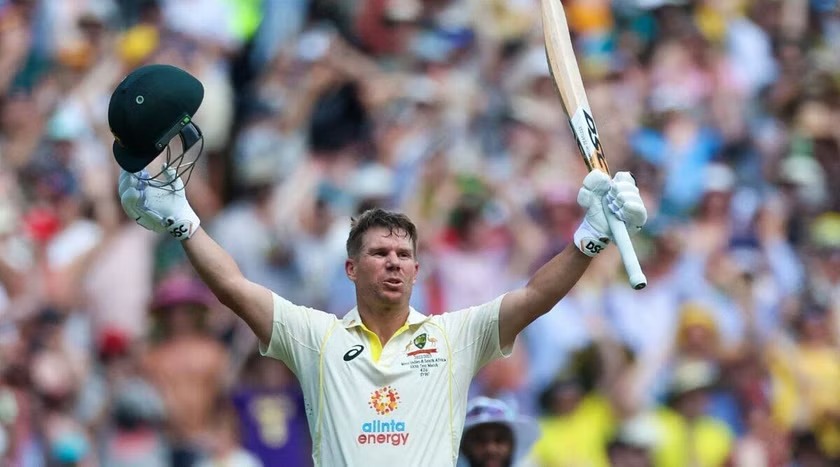
As David Warner announced that he is all set to hang up his boots from the longest format at the end of the SCG Test against Pakistan next year, one particular memory came flooding back.
To reminisce that fond memory, one has to travel back to a time when Warner was known more as a T20 specialist. And the first few deliveries he faced during the second innings of the Hobart Test against New Zealand in 2011 indicated that he was perhaps better suited for the shortest format.
Even before opening his account, Warner was beaten on the outside edge a couple of times while facing Trent Boult. That was followed by a leading edge, alongside being rapped on the pads by a Chris Martin nip-backer. Thankfully for Warner, the ball was pitching outside the line of leg stump. At that juncture of his fledgling Test career, Warner had looked unconvincing in his brief innings at the Gabba and the first innings of the Hobart Test.
But to the surprise of many, including yours truly, he soon found the right balance to walk the tightrope with some conviction. In the seventh over, Warner’s sheer persistence to not give his wicket away paid off as Martin bowled a half-volley, and he crashed a drive through the covers.
That one particular shot off Martin is still framed and stamped in the memory bank, as it freed up Warner the batter. The occasional drive through the covers and mid-off started to flow off Warner’s willow. Yes, with the ball nipping around, he was still circumspect. He also completed his maiden Test fifty with a thick outside edge off Doug Bracewell, that scurried away to the third-man fence. But it was quite clear that he had gauged the conditions, and was there to stay in the longest format of the game.
At 157 for 2, with Ricky Ponting, his captain, still at the crease, one also wondered whether it would turn out to be a falry-tale Test for Warner: A game-breaking hundred in the fourth innings, and that too in just his second game. Just that destiny had something else in store for Australia and Warner. Once Ponting fell to New Zealand’s man of the moment, Bracewell, Australia lost wickets in bunches, and slid to 199 for 9.
At that moment, the equation read: 42 runs required and just one wicket in hand. One batter was playing in his second Test and Nathan Lyon, the No.11, in just his seventh. Remarkably for a last man, Lyon looked calm and composed. He left a few on length and also defended on the front foot. As the tension mounted, New Zealand wasted a couple of reviews for LBW, and Australia sneaked in four leg-byes as well. At the other end, Warner had already reached the coveted three-figure mark, and seemed to have loads of belief that he could steer his country home.
He then stole singles and twos off Bracewell and Southee. Once, he did make room and thump Bracewell through the cover region, only for a superb piece of fielding in the deep to keep it down to two runs. He also showed some leadership qualities very early in his career by backing Lyon to take a sizeable portion of the strike against Southee and Bracewell. Ultimately, with Australia just eight away from the finish line, Bracewell nipped one away off the seam to open up Lyon on the defence and rattle the timber. As the cock-a-hoop New Zealand team celebrated their win, Lyon was on his haunches, looking distraught. Warner too seemed to be in a state of disappointment.
“My mood is always going to be the same when I go out there, and to achieve a milestone like that is always fantastic,” said Warner at the post-match press conference. “But at the end of the day, we lost and it’s disappointing to be out there with eight runs to go and not get across the line.”
Although Warner ended up on the losing side on that occasion, and the headlines were about New Zealand’s first Test victory against Australia in more than 18 years, the one enduring memory would be of a young Warner punching the air in delight after compiling the ton. Maybe, just maybe, he would have a fairy-tale ending in his final Test.



